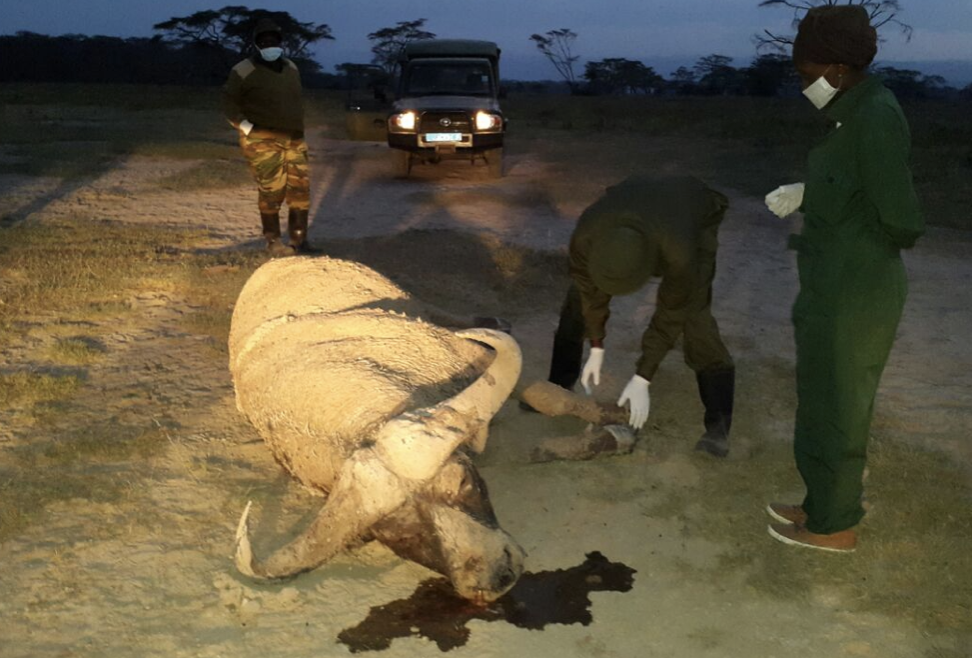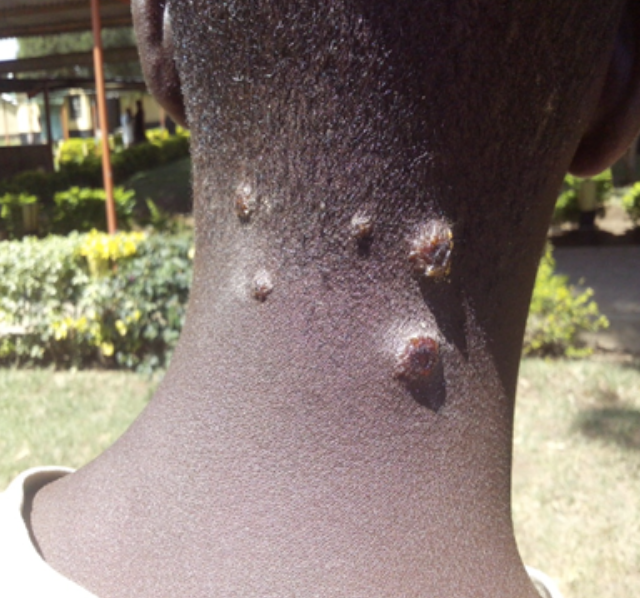Credit: International Livestock Research Institution, ILRI

Anthrax Description
Anthrax is also called carbúnco or splenic fever. It used to be a global disease, but many countries have succeeded in eradicating it.
It is prevalent in East Asia, West and Central Africa, Madagascar and Central America.
Anthrax Animal Symptoms
The peracute form of Anthrax progresses rapidly! Dead animals are suspected to have died from poisoning or lightning.
As the blood does not coagulate normally with Anthrax, the blood in and around the nose, mouth, vulva and anus may be black in colour.
Symptoms of Anthrax of the acute and sub-acute form include: fever, nervousness, difficulties with breathing and walking
Symptoms of Anthrax of the acute and sub-acute form also include: convulsions (fits) and death. The blood is not always observed to be black
The chronic form of Anthrax develops slower, with a swollen tongue and bloody foam from the mouth, but the animal soon dies because it cannot breathe.
The carcass of animals that have died from Anthrax do not become rigid.
Anthrax Animal transmission
Anthrax can affect all animals, domestic and wild.
Animals become infected with Anthrax when they drink contaminated water or eat contaminated grass from a spot near where a carcass with anthrax lies exposed
Anthrax Human Symptoms
Anthrax transmitted by skin causes vesicles in the skin that are slightly painful and black colour. Without treatment, one out of five infected people die.
At the onset Anthrax via inhalation seems like a common respiratory infection, but days later it becomes more serious and may even cause death.
Symptoms of Anthrax disease from eating contaminated products are violent, expressed by vomiting and bloody diarrhoea. Some 25 to 75% of the patients die.
Anthrax Human transmission
Anthrax can be transmitted via the skin by touching the carcass, blood, wool, bones or skin of an animal that died of anthrax.
Respiratory form of Anthrax is caused by inhalation when working with leathers and wools in a closed atmosphere.
Intestinal form of Anthrax can be contracted from eating the meat or drinking the blood of an animal affected by this disease.
Anthrax Prevention
Any animal that dies suddenly is suspicious of being infected with anthrax: do not do an autopsy on this animal it can be very dangerous!
Do not do an autopsy nor touch with bare hands or eat an animal that has died of unknown causes specially if it has blood oozing out of its natural openings
Destroy the carcass as rapidly as possible by burning or burying with caustic lime. Prevent wild animals opening the carcass or grave
Beware of small skin injuries and take care of personal hygiene when disposing of a suspected dead animal. Wear gloves and protective gear
Ventilate and use proper working clothes in places where products of animal origin are handled, especially leathers and wool.
Vaccinate cattle and goats annually in regions where anthrax is common
Anthrax Action
If you suspect Anthrax: (1) In animals – contact your veterinarian; (2) In humans – contact your physician

Photo Credits ILRI/ZooLink
Content provided by Zoonotic and Emerging Diseases Group (ZED) University of Liverpool , International Livestock Research Institute (ILRI), Zoonoses in Livestock in Kenya (ZooLink)